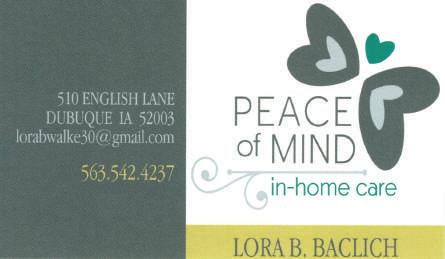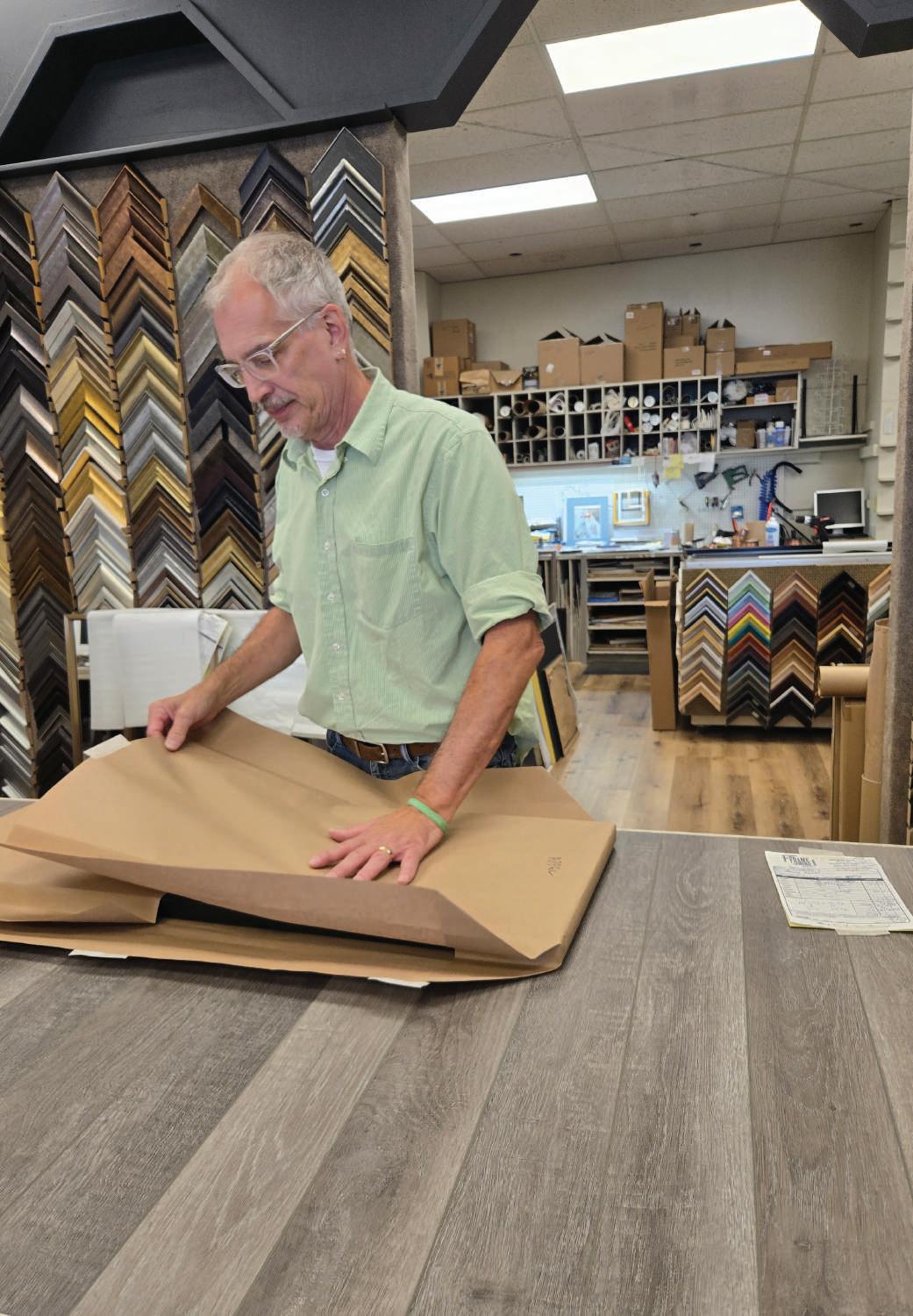

CHOICES For Fifty Plus


CHOICESFor Fifty Plus
The publisher makes no representations concerning any product or service advertised in this publication. CHOICES For Fifty Plus and JuliensJournal.com serve only as a medium for sellers to reach potential buyers and do not warrant the accuracy of any advertisement. CHOICES For Fifty Plus makes every effort to eliminate typographical errors and assumes no responsibility for misspelling names. All editorial items submitted are subject to editing and alteration at the sole discretion of the publisher. Design and format of the magazine and website are protected by the copyright laws of the United States of America. Reproduction of this publication in whole or in part is prohibited without specific written permission of the publisher. For Advertising Inquiries, Feature Article Submissions and Billing Inquiries Contact Robin Nichols at 563.557.7571 or Robin@JuliensJournal.com.
Inc. in Asbury, IA. Mailing address: 6170 Forest Hills Drive, Asbury, IA
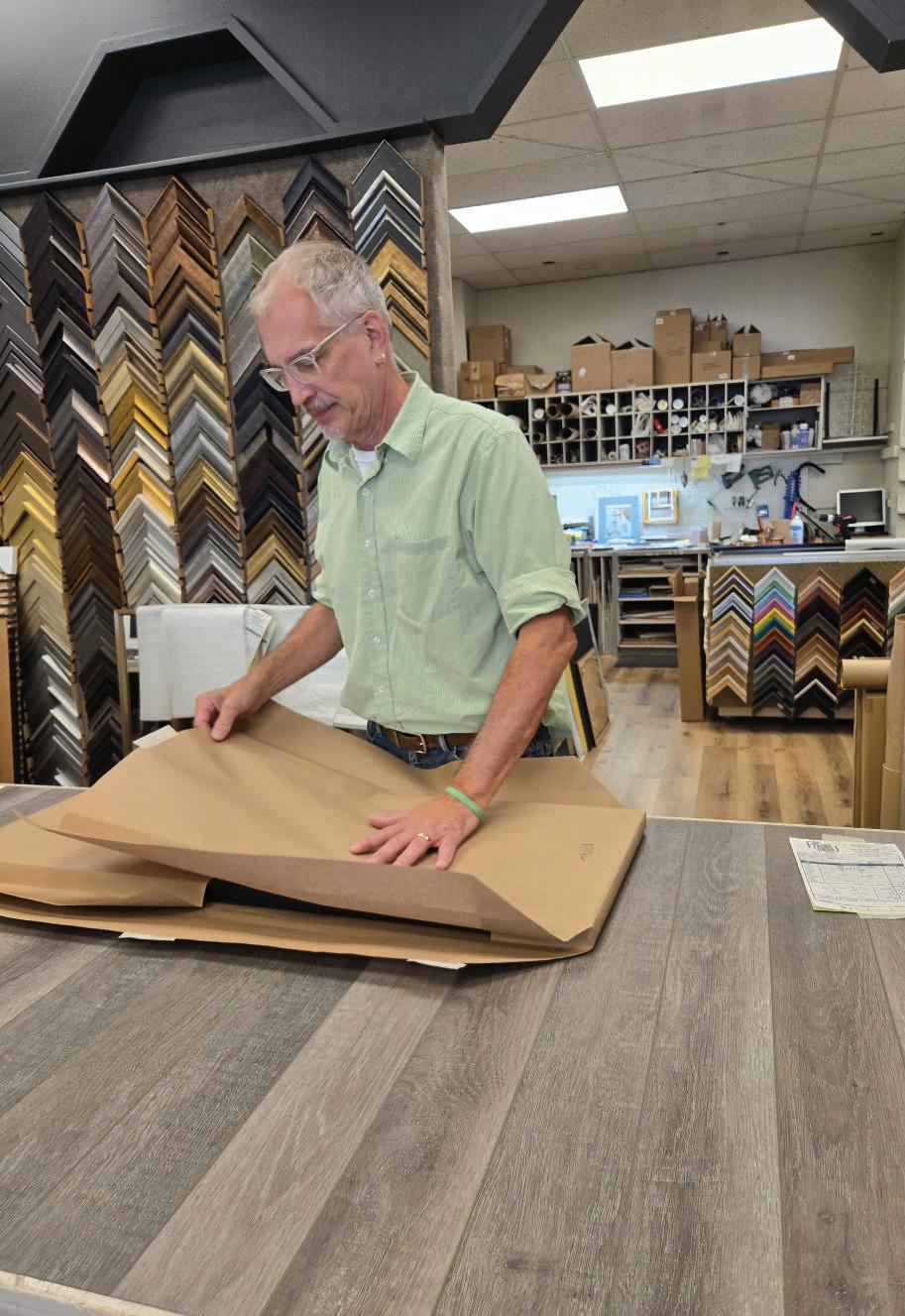
Dan Soat of A Frame of Mind prepares a piece of artwork for transportation.
How to Properly Preserve Family Artwork for Future Generations
Article and photos by Tracey Rush
Pablo Picasso said, “Art washes away from the soul the dust of everyday life.” The fact is art in our homes also collects the dust of everyday life. While we can do our best to keep that everyday dust away from our art items, what will happen to our art once we have gone? What steps can we take now to ensure our art is preserved now and in the future?
Now if you have a valuable art collection, you probably already know how to store, document, insure, and display your collection. But if what you own is more of sentimental value,
with works done by friends and family (like what hangs on my walls), here are some tips to help ensure your art outlives you in safety.
First, look around and see what is hanging up on your walls. Sure, you know who is in the paintings, or what river is in the landscape, but when you are not around to give the details, will your next-of-kin know? I urge you to write on the back of the mat (or get a piece of paper and adhere it firmly to the back) with as many details as possible. My living room art includes four watercolor family portraits I commissioned from my friend Ruth Palmer Pitman, all from family photos. Sure, my children will recognize them-
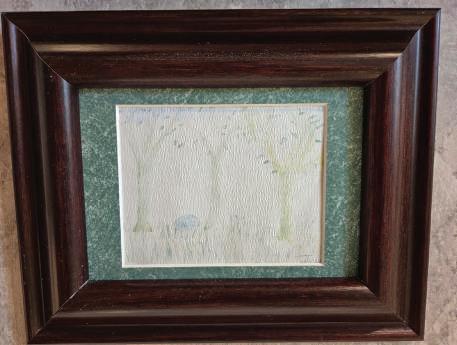
selves in the paintings, but will they remember how old they were at the time? Will their children recognize their father as a child? My friend Ruth no longer lives in the area, and they will not recognize her signature, so I will include her name on the info on the back. Including the history of a piece of art is called its “provenance.” Err on the side of too much information; future generations will thank you.
If you are uncomfortable writing on the back of your art, keep a notebook or database with all the details, along with photos of each piece, with the important family papers. Chris ChapinTilton was left with 70 of her husband’s watercolors when artist Jac Tilton passed away

The colors were much more vibrant when Tim Rush painted this in an 8th grade art class, but the painting has been hanging in direct sunlight for almost 30 years and is now faded. Only the documentation on the back of the painting provided the information that he was in 8th grade at the time.

recently, but she says, “I was with him when we traveled to so many of these places, so I know where they are.” Her best advice to others is to “document, document, document.” Jac left a detailed database listing loca-
tion, size, cost, etc., and all she has to do is refer to that when displaying or selling any of his works.
Be like Jac and document. Do not be like Mary Lee. This summer, my sister Mary Lee –
travel agent by vocation, artist by avocation – passed away suddenly, leaving me with several dozen of her creations, along with all her earthly possessions. She did not document anything. She painted from the photos she took on her world travels, but I cannot tell one castle from another, and there are a lot of castles! In going through her photo albums of her trips I have recognized some of the locations of her art, but it would have been much easier had she written place and date on the back.
Many of us have more art than wall space and it is important to store the extras properly. Dan Soat of A Frame of Mind






Mary Lee Ryan painted this depiction of a traditional Egyptian sailboat on the Nile, but the only reason the information is known, is due to a mutual friend with whom she often discussed her work and travels.
“Keep the
art flat, not rolled
up.
If a painting has been rolled up for a long period of time, it is very difficult to unroll it for framing without causing a crease somewhere.”
Custom Framing in Dubuque recommends storing artwork horizontally, using acid-free paper or foam board between the paintings, especially if the art is not framed. Soat says, “Keep the art flat, not rolled up. If a painting has been rolled up for a long period of time, it is very difficult to unroll it for framing without causing a crease somewhere.” Several of my sister’s acrylic canvases are a bit warped and it will be “fun” trying to get them into a frame.
Acid-free foam board (available at craft and hobby stores) should also be used as backing rather than cardboard when you are framing artwork. Over time, the acid in cardboard can cause discoloration, so it is also better to put acid-free paper or foam board between pieces when storing art. Cardboard is also susceptible to moisture and you certainly do not want mold growing on your artwork. If you need to mail any artwork, cardboard and butcher paper can be used temporarily for transportation but not longterm storage.
The ideal temperature at which
to store art is 70-72 degrees, with humidity no more than 50%. That probably eliminates your garage as a good storage place or those extra shelves in the basement bathroom. (Does anyone really have extra shelves???) Your storage place should also be a place where the art will not be in direct sunlight. While natural lighting is usually the best for viewing art, exposure to sunlight over time may cause the paintings to fade, especially watercolors.
Final word: if you want to leave a piece of art to a certain relative or friend, include that in your documentation or the note on the back so everyone knows your intentions. Art should
bring joy and fond memories for generations to come.
Tracey Rush is a local music teacher who has inherited her sister’s art supplies, so she will be spending her spare time dabbling in acrylics and watercolors, because it makes her happy. ❖
Comments on this article can be sent to comments@juliensjournal.com.
My living room art includes four watercolor family portraits I commissioned from my friend Ruth Palmer Pitman, all from family photos.

Understanding the Difference Between Certified Medical Home Care vs. Non-Medical Home Care

by Peggy Stockel
As more people choose to age in place, and healthcare providers focus on delivering cost-effective, high-quality care, the demand for home and community-based services is increasing. Many people can remain healthy and safe in their home, even with chronic health conditions with some help and support. Home Care can help fill this need, however, there is often confusion about the different types of home care and when they are appropriate. Both certified medical home care and non-medical home care are vital parts of the care continuum,
but their purpose, scope, and eligibility requirements vary significantly. Whether you’re a caregiver, family member, or planning for your future, understanding both options can help you make well-informed decisions and access the right care at the right time.
WHAT IS CERTIFIED MEDICAL HOME CARE?
Certified medical home care— also called skilled home health care—is provided under the supervision of licensed healthcare professionals like registered nurses, physical therapists, and occupational therapists. Usually ordered by a doctor,
this type of care is regulated and reimbursed by Medicare, Medicaid, or private insurance. Key Characteristics of Medical Home Care:
• Must be ordered by a physician.
• Delivered by licensed clinicians (e.g., RNs, therapists, home health aides under supervision).
• Typically, it includes wound care, medication administration, IV therapy, post-surgical recovery, and physical rehabilitation.
• Short-term and goal-oriented—focused on recovery or
• Certified by CMS (Centers for Medicare & Medicaid Services).
WHAT IS NON-MEDICAL HOME CARE?
Non-medical home care helps people with daily activities, offers companionship, and keeps a home safe. It is usually not covered by Medicare and is paid for privately, with long-term care insurance, or through Medicaid waiver programs.
Key Characteristics:
• No physician order required.
• Provided by trained caregivers or aides (not necessarily medically licensed or certified).
• Services include bathing, dressing, meal preparation, housekeeping, medication reminders, transportation, and companionship.
• It can be long-term and adapted as the person’s needs change.
• Ideal for those needing assistance to remain independent at home.
MEETING EVOLVING NEEDS WITH INTEGRATED SUPPORT

Home care provides a crucial bridge between hospital, rehabilitation, assisted living, and independent living. Addressing needs in the home environment can help individuals avoid costly emergency room visits and hospital re-admissions. It supports chronic disease management in a patient-preferred setting and extends the reach of health systems into the community, meeting patients where they are. It provides peace of mind and can lighten the responsibilities of family caregivers.
For many families, the best approach involves using both types of care. For instance, someone recovering from surgery might receive certified medical home care initially and then transition to non-medical support for long-term help at home.
As health conditions change and individual needs shift, home care can help people stay healthier, safer, and more independent in their preferred setting. By combining medi-
cal care, personal assistance, and social supports, home care addresses both clinical conditions and activities of daily living. This integrated approach improves outcomes, lowers costs, supports valuebased care goals, and ensures people receive the right care at the right time in the right place.
Our aging population is growing. Home care will be an essential part of meeting the needs of this population. Understanding the differences between certified medical and non-medical home care can help families, caregivers, and individuals make the best choice for their unique healthcare needs, which will ultimately enhance quality of life.
Peggy Stockel is the President/ CEO of Stonehill Communities. She has 40 years of experience in aging services and is passionate about enhancing the health and quality of life of older adults as well as improving the efficiency of our health care systems. She can be reached at 563.557.7180. ❖



A GUIDE TO MEDICARE’S ANNUAL ENROLLMENT PERIOD

by Stefan Johnson
This is the season for football, corn harvesting, leaves turning, and for those of us on Medicare: The Annual Enrollment Period (AEP). This is your chance to review and change your Medicare coverage to ensure it continues to meet your healthcare needs and budget for the year ahead. Running from October 15 to December 7, the AEP can feel overwhelming, but a little preparation can go a long way.
UNDERSTANDING YOUR OPTIONS
First, it’s crucial to understand what you can and can’t do during this time. The Annual Enrollment Period is for making changes to your Medicare Advantage (Part C) and Medicare Part D (prescription drug) plans. If you are happy with your current plan and it’s still being offered, you don’t
need to do anything—your coverage will automatically renew. However, even if you’re satisfied, it’s a good idea to review your options, as plans can change from year to year.
During the AEP, you have the opportunity to:
• Switch from Original Medicare (Parts A and B), to a Medicare Advantage plan.
• Switch from a Medicare Advantage plan back to Original Medicare.
• Switch from one Medicare Advantage plan to another.
• Leave a Medicare Supplement (Medigap) Plan, or a Cost Plan, and move to a Medicare Advantage Plan.
• Join, change, or drop your Medicare Part D prescription drug plan.
The choices you make during this period will (generally) become effective on January 1, 2026.
It might also be helpful to know that, in certain circumstances, at any time of year, changes can be made within Medicare Supplement or Cost coverage strategies.
YOUR ANNUAL NOTICE OF CHANGE (ANOC)
Your Medicare Advantage or Part D plan is required to send the Annual Notice of Change (ANOC) to you every September. It outlines all the changes coming to your current plan for the next year, including adjust-
ments to premiums, deductibles, copayments, and the list of covered prescription drugs.
Reviewing your ANOC is the first step in your decision-making process. Are your monthly premiums going up? Is your doctor still in the plan’s network? Have any of your prescriptions been moved to a higher costsharing tier or removed from the plan’s formulary altogether? These are key questions to ask as you evaluate whether your current plan is still the best fit.
ASSESSING YOUR HEALTHCARE NEEDS
Think about the past year and your healthcare needs. Have your prescriptions changed? Have you been diagnosed with a new condition that requires you to see a specialist? Have you had any major health events that might alter your needs in the coming year?
With rising healthcare costs projected for 2026, it’s particularly important to consider your budget. Medicare Part B premiums and deductibles are expected to increase, as are Part D deductibles and out-ofpocket spending limits. It may be a good time to explore different plans and strategies to find one with a more favorable cost structure for your situation.
TOOLS AND RESOURCES
Navigating all the different plan options can be daunting, but you don’t have to do it alone. The official Medicare
Plan Finder tool on Medicare’s website is a potentially helpful resource. Another way to turn to the government for help is through the State Health Insurance Assistance Program (SHIP).
A third option is to work with a licensed, experienced broker of Medicare products. A good broker-advisor will look at your needs, situation, and current plan and then discuss options with you. It may be that your current plan is best… or there may be a different strategy that will serve your needs more effectively. Your premiums will not increase if you work with a broker. And most brokeradvisors do not charge clients for their services.
Don’t wait until the last minute! Take the time now to review your current plan and explore your options. By being proactive, you can ensure your Medicare coverage in the coming year is the right fit for your health and financial needs.
Stefan Johnson helps people choose Medicare Advantage, Supplement, Cost, and Prescription Drug plans. He is licensed in Iowa, Wisconsin, Illinois, and Minnesota and represents several companies providing Medicare-related products. He can be reached at 563-581-9341 or sj@retiringease.com. ❖
Comments on this article can be sent to comments@juliensjournal.com.
UNDERSTANDING GRIEF’S MANY FACES: THERE’S NO “RIGHT” WAY
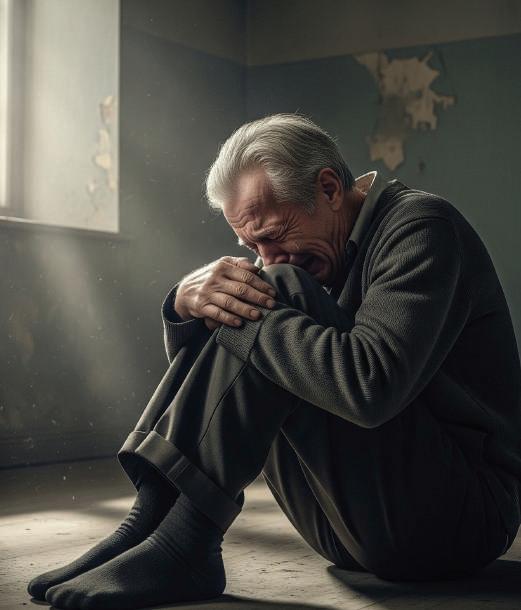
Grief is a universal, yet intensely personal, experience. When we face loss, our reactions can be as diverse as the individuals we are. It’s crucial to understand that there’s no “right” or “normal” way to grieve, and your unique journey through sorrow is valid, whatever it looks like.
Forget the idea of grief as a neat, linear process with clear stages. It’s often a turbulent and unpredictable landscape. You might feel overwhelming sadness one moment, only to be surprised by bursts of anger, nagging guilt, or even unexpected relief. Some people experience numbness, a protective shield against the pain, while others find themselves overwhelmed by a cascade of intense emotions. Physical manifestations are also common, from fatigue and changes in appetite to difficulty sleeping
.Your grief might fluctuate daily, even hourly.
TO GRIEVE
One day you might feel a sense of acceptance, and the next, a fresh wave of despair can wash over you. This ebb and flow is not a sign that you’re “doing it wrong”; it’s simply the nature of healing. Allow yourself the space to feel whatever arises, without judgment. There’s no timeline for grief and comparing your experience to others can be unhelpful.
Ultimately, understanding the many faces of grief means embracing your own process. Be kind to yourself, seek support when needed, and trust that whatever you are experiencing is a legitimate part of your unique path toward healing and remembrance.
This Bereavement Tip was Brought to you by Behr Funeral Home. Visit their website at Behrfuneralhome.com. ❖

Not Ready for a Nursing Home? Assisted Living May Be an Option
by Alison Vanderpool
The transition to a senior living community is a significant life change, but it can offer numerous benefits that enhance quality of life, promote independence, and provide peace of mind for both residents and their families. These communities are designed to foster social engagement, offer a safe environment, and provide convenient access to a range of services. By removing the burdens of homeownership and daily chores, senior living allows individuals to dedicate more time to hobbies, new friendships, and personal well-being.
One of the most notable benefits is the opportunity for increased social connection. Loneliness and isolation can have a detrimental effect on anyone’s physical and mental health. Senior living communities combat this by creating a vibrant social environment with planned activities, clubs, and communal spaces. Residents can easily engage with their peers, share meals in a restaurant-style setting, and participate in a wide array of events, from fitness classes to educational workshops. This consistent social interaction can lead to a greater sense of purpose and improved overall health.
Additionally, these communities provide a secure and supportive environment. Many facilities offer 24/7 staffing, emergency call systems, and on-site medical care, which gives residents and their families confidence that help is always available. The elimination of home maintenance, such as yard work and repairs, also reduces the physical risks associated with these tasks. With services like housekeeping, laundry, and transportation either included or available, residents are free from daily hassles and can maintain a more active and
fulfilling lifestyle.
When considering a senior living option, it’s crucial to understand the difference between assisted living and a nursing home (also known as a skilled nursing facility). The primary distinction lies in the level of care and medical supervision provided.
Assisted living communities are for individuals who can live a largely independent lifestyle but require some assistance with activities of daily living (ADLs), such as bathing, dressing, grooming, and medication



management. These facilities are designed to feel like a residential apartment complex, often with private suites and a focus on social activities and personal freedom. The care is supportive rather than intensive, aimed at helping residents maintain their independence for as long as possible. The staff are trained caregivers and are available to help with everyday tasks. Nursing staff are often available for more medical tasks and higher levels of care.
In contrast, a nursing home provides a much higher level of medical care and supervision. These facilities are for seniors with serious health conditions, complex medical needs, or those recovering from a recent illness, injury, or surgery. They offer round-the-clock skilled nursing
By removing the burdens of homeownership and daily chores, senior living allows individuals to dedicate more time to hobbies, new friendships, and personal well-being.
care from licensed medical professionals, including registered nurses and physical, occupational, and speech therapists. A nursing home environment is
more clinical and hospital-like, with a focus on treating conditions and providing continuous medical monitoring. Stays can be short-term for rehabilitation or long-term for those who require extensive care that cannot be managed at home.
Alison Vanderpool is the Director of Sales & Marketing at Ahva Living of East Dubuque. She can be reached at admissions@alofeastdubuque.com or 563.451.2379. ❖





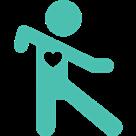






Why Our Healthcare System Needs to Change Its Focus
by Dr. Richard Houston
As a member of my local county health council, I received a request to respond to a survey sponsored by a well-known community organization. The survey focused primarily on the availability and quality of health care. Like the surveys I received from the primary health care service provider, the survey authors were trying to determine if people had access to good care and whether the care met their needs.
The survey questions were well crafted, but in my opinion, the survey missed one of the most important issues on the health care front completely. The availability and quality of medical care are, no doubt, important issues. In many communities, especially in rural areas, access to qualified medical professionals and particularly specialists
is a problem. Hospitals in rural areas face a new threat given the cutbacks planned for Medicaid as engineered in recent federal legislation.
Primary healthcare service providers are, however, squarely in the business of generating revenue for treating sick people. They are not in the business of prevention – reducing the inci-
dence of illness in the population that they serve. Research data from Intermountain Health of Salt Lake City shows that concerted efforts to promote healthy lifestyle habits can reduce the use of medical services by nearly half.
A report from The Lancet , the prestigious U.K. health journal, concludes that 45% of dementia cases can be prevented by adoption of healthy lifestyle habits.
A report from the San Francisco Veterans Administration hospital stated the same basic finding.
Instead of focusing all attention
to ensure that the quality of health care services achieves a high standard, our healthcare system should be devoting equal resources to changing the way people think and behave relative to preventing chronic illness and sustaining cognitive acuity. The research concludes that achieving those goals could drastically reduce the demand for healthcare by promoting behaviors that enable people to live longer, healthier lives.
Inquiries made to both business and clinical leaders of my local hospital have been completely ignored. Inquiries made of my physician are met with a response that claims that individual healthcare professionals should take responsibility for


better outcomes. However, there is no effort to collect systematic data on my lifestyle habits and no initiatives emanating from the provider to promote lifestyle habits that could prevent dementia.
This predicament places responsibility for prevention strategies primarily with the individual patient. A very small percentage of the public understand basic facts about the aging human brain. Every person reading this article can generate the growth of new neurons in the hippocampus, the central switching station for human memory, starting today.
Tom Frieden, M.D., former Director of The Center for Disease
Control and Prevention, states that active lifestyle habits are “the closest thing we have to a wonder drug.” Yet only 24% of adults over the age of 60 meet recommended standards for physical activity.
Our own original research conducted with 1,600 Silicon Valley adult residents clearly demonstrates that psychological factors play a major role in sustaining this ‘conundrum.’ If we can literally cut our risks of cognitive deterioration by nearly half, why aren’t more people determined to make that happen?
Regular readers of my articles have had the opportunity to examine many of the psychological dimensions of healthy lifestyle

habits. We plan to continue that focus in future issues. In the meantime, we strongly encourage readers to review our tutorial of the aging brain by visiting Healthyagingcontent. com/neuropsych1. The tutorial is free of charge.
Dr. Richard Houston is an active and curious ‘senior’ who strives to get outdoors for a brisk walk daily. He is a graduate of Brown University and earned advanced degrees at Clark University. He was licensed by the Massachusetts Board of Psychology in the early 1980’s. Check out his web site at SeniorPsych.com where readers can find tutorials and his contact information. ❖
Experience a vibrant senior community designed for your comfort and freedom.
Enjoy a lifestyle free from the hassles of home maintenance, with modern amenities, engaging activities, and a supportive environment.
Independent & assisted living apartments
3 nutritious meals per day, 7 days per week
On-site therapy
Scheduled transportation
Maintenance-free living Embrace a new chapter of
Call 563-690-1900 today to learn about our special offers or schedule a personalized tour!

Daily exercise classes

Housekeeping & laundry service ...and more!
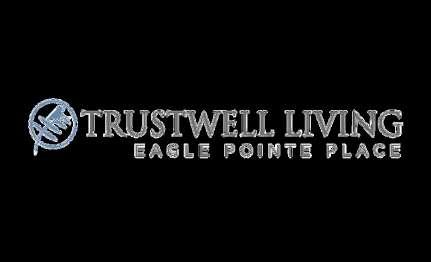

USE LUMINAR AI TO TRANSFORM HOW YOU THINK ABOUT YOUR TRAVEL PHOTOS

In our ongoing exploration of artificial intelligence, we’ve learned to plan meaningful travel experiences. Then we started creating a Travel Keepsake that captures not just photos, but the stories, feelings, companions, connections, and discoveries that made our trip so enriching, using Claude AI to help us articulate the emotions and significance.
An AI generated photo of The Duomo in Florence Italy.

Now it’s time to ensure that our trip photos match the power and beauty of our written memories.
Most of us have experienced the disappointment of looking at travel photos that fall short of what we witnessed. That stunning sunset appears flat and colorless. The majestic cathedral looks ordinary. And who’s that guy at the edge of that great shot of us waiting at the train station beside a mound of luggage? This gap between memory and image isn’t a failure of our photography skills, it’s a limitation of camera technology that artificial intelligence can now bridge through tools like Luminar AI.
UNDERSTANDING AI-POWERED PHOTO ENHANCEMENT
Traditional photo editing involves making technical adjustments, brightening underexposed images, boosting dull colors, or cropping for better composition. These tools require you to identify problems and manually apply corrections using complex sliders and settings.
AI-powered photo enhancement operates differently. Instead of waiting for you to identify what needs fixing, AI analyzes your entire photograph with sophisticated algorithms that “see” and understand what you’ve
captured.
The AI recognizes faces, skies, architectural details, water, and foliage, then applies contextually appropriate enhancements to each component. For travel photography, this is particularly significant. Travel photos are often taken under challenging conditions like harsh midday lighting or gloomy skies. Traditional editing might improve these photos incrementally, but AI enhancement transforms them.
LUMINAR AI’S ENHANCEMENT CAPABILITIES
Luminar AI offers subtle improvements as well as dramatic transformations. Even its more standard editing tools provide

intelligent versions. Exposure and lighting corrections help rescue photos taken in difficult conditions, like cathedral interiors where magnificent frescoes come out too dark. Color enhancement restores the vibrancy you remember—the warm golden tones of Tuscan hillsides or the stunning azure of the Mediterranean. “Smart cropping” improves composition.
And this is important! Luminar AI editing is “non-destructive.” This means you will never mess up your original photos as you experiment with adjustments. Instead of replacing your original photo, Luminar creates a set of instructions, like a recipe, describing what you want
changed. It leaves your original file alone. You can even create multiple versions of the same photo.
Luminar’s AI functions can transform the look and feel of your images. Enhance AI serves as the most comprehensive tool, analyzing your entire photograph and applying multiple improvements simultaneously. Sky AI examines your photo, seamlessly replacing a dull sky with a more dynamic one. Structure AI enriches textures and architectural details, making buildings appear more three-dimensional so viewers will experience awe at the craftsmanship. Skin AI subtly enhances facial features of travel companions,

ensuring your memories focus on shared joy rather than temporary fatigue.
A PRACTICAL FLORENCE EXAMPLE
Let’s walk through enhancing a typical travel photo. Imagine you’ve photographed the facade of the Duomo in Florence during harsh midday lighting with a bland sky. Open your photo in Luminar AI and assess what needs improvement. The marble patterns might appear flat, the sky lacks interest, and contrast might be extreme.
First, apply Enhance AI to automatically balance exposure, heighten the natural colors of the marble, and improve overall clarity. You’ll see immediate improvement in the details.


Next, use Structure AI selectively to bring out texture in the marble facade, adjusting carefully to enhance the three-dimensional quality without over-processing.
Consider using Sky AI to replace the bland sky with scattered clouds or a warm sunset. Finally, fine-tune using standard adjustments, perhaps boosting saturation to make the colored marble more vibrant.
The result should capture both the magnificence and emotional impact of standing before one of the world’s great architectural achievements. When paired with your Claude-enhanced written stories and descriptions, this image becomes part of a compelling narrative that transports readers to Florence. The keys to effective use of AI enhancement are balance and judgment—ask yourself whether
each adjustment serves the story you’re telling.
ORGANIZING YOUR ENHANCED CONTENT
As you intensify your trip photos, organization becomes crucial to your successfully completing your travel book. Create a logical file structure that mirrors the organization of your written content. Use clear folder names like “Florence_Day1_Enhanced” and consistent naming conventions that include location, subject, and enhancement status. Consider your storytelling flow when selecting which photos to improve—not every photo needs a dramatic transformation.
THE BIGGER PICTURE
Your travel experiences, emotions, and memories remain entirely your own. And now AI provides powerful tools for you to share those experiences with others in ways that capture the significance and “take them there.” Perfected photos partner with your Claude-enriched stories to create a travel keepsake that captures not just what you saw, but what you experienced and felt. These refined photos also can take you back, rekindling additional detailed memories and stories about your travel adventure.
The skills you’re developing here extend far beyond travel documentation. Learning to have productive conversations with AI assistants, understanding how AI can enhance visual content, and mastering basic design principles will serve you in countless future projects. You’re developing digital literacy skills that will enrich many aspects of your life.
Dr. Carolee Duckworth’s unique blend of technology insight, travel expertise, and understanding of retirement life and living makes her a leading voice in helping retirees embrace new adventures. Among her many books available on Amazon, are: “Painless Intro to Luminar AI: Transform How You Think About Your Travel Photos” and “Shifting Gears to Your Life and Work After Retirement.” Her upcoming book, “AI for Seniors: Embracing AI, Lifelong Learning & Discovery after 60” will be available on Amazon in October 2025.❖
Comments on this article can be sent to comments@juliensjournal.com.
Business Card Directory



